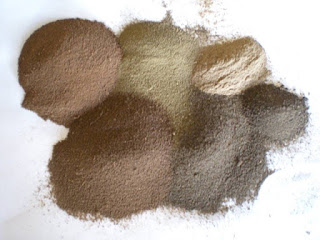
2024 Prices
A two night weekend (Fri & Sat) is £242
A three night weekend (Fri, Sat & Sun) is £352
A two night midweek is £220.
You can also stay for a whole week or longer.
(Check in days are Monday, Wednesday and Friday)
Contactless Check in from 3pm on the day of arrival and depart by 10am on day of departure.
Please contact us to check availability on 01594 860244 or EMAIL
What to bring click here
To read and accept our Terms and Conditions click here
Please note the Yurt is not suitable for children and no pets allowed.
Please note the Cider Orchard Yurt is only open from April - end of September
Guest Information
Guest Welcome Information File
Guest feedback
"Such a relaxing and beautiful place to stay! Weather has been fantastic. The Yurt has everything you could possibly need"
"What a memorable way to celebrate our Silver Wedding Anniversary. Peace and tranquility, birdsong and the bleating of sheep. The Yurt was beautiful and so comfortable. The surrounding area is fabulous too, especially the Forest of Dean. Everything we hoped for and more. We hope to return in the winter and make use of the Hobbit Stove and the blankets. Heavenly! ".



Our Approach to Soil Fertility and System Health ~ by Matt Dunwell
February 15th 2017 POSTED BY: Ragmans Farm
Ragmans Farm is a 60 acre organic farm
in the Forest of Dean in Gloucestershire. We use farming practices that
regenerate the land, using
permaculture as a guiding design principle. Between the three
main enterprises at the farm – Ragmans Lane Farm, the Willow Bank and Ragmans
Market Garden, we provide employment for about 8 people.
Ragmans Lane Farm has eight acres of
organic apples and we make our own brand of apple juice. We also host a series of courses throughout the year on land related
issues.
A course led by Jairo Restrepo in 2015 introduced us to a new philosophy of system health, based on building
healthy soils. This had a profound
effect on the farm, and led us to set up a full time research post to develop
these principles for temperate climate agriculture. Our research manager, Juanfran Lopez, is half way into a three year programme and this blog is predominantly about his
work here at Ragmans.
Our research goal is to gain expertise in making soil
amendment preparations. We will then measure the effectiveness of these
biological techniques on system biology and mineral balance on plant-soil
health and growth. Over the last twelve months we have put in place a series of
soil and plant tests and taken baseline data.
We are testing for pH, salinity, conductivity, a wide
range of trace elements and also available nitrogen. In addition to this, we
are developing a high quality range of preparations and techniques such as
biofertilisers, aerobic teas, mineral chelations, mychorriza, chromatography,
lactic acid bacteria, and native microorganism reproduction among other
methods….
The objective of this practice is to reproduce the local
microbiology, as bacteria, actinomycetes, fungi, algae and protozoa working in
a complete harmony in a healthy environmental system (forest, farm or even animal
and human system).
Whilst it is tempting to
try to produce a range of products for sale, we are wary of claims that certain
microbe mixes are ‘silver bullets’ to be used in the same way as chemical
fertilisers or herbicides.
We believe it is more important
to get a good understanding of the science behind this approach, and then for
farmers to tweak them into individual requirements or situations, thereby
having a positive impact on the farmer´s autonomy and viability and hopefully reaching
a broader scale.
An example of how we can work
through these preparations can be seen at Ragmans currently. We have in the past sampled our soils and
found them lacking in certain trace elements.
A conversation with any good soil lab will furnish you with the trace
elements needed, normally in the form of salts – magnesium sulphate etc. These
are supplied and put out onto the land with a spreader.
The addition of trace elements
in this way can be ineffective as both the soil and plant are looking for
elements in a bioactive form – ie easily digestible. For this reason sometimes
the addition of trace elements can be disruptive and almost always there is
waste.
When we make biofertiliser on
the farm we build a biologically active system using fresh cow manure that has
the gut flora and fauna of a ruminant. To this we add various ingredients –
including molasses, yeast, native microbes from the forest soil. A ferment takes place into which we can
place trace elements in minute quantities over a period of three or four
months. These minerals are cycled
through countless generations of microbes becoming more and more biologically
available.
When the preparation is ready
we spray onto the leaves and soil thereby feeding the system through the plants
that in turn will feed soil microbes with essential micro nutrients.
This is a basic example of our
approach as taught by Jairo Restrepo. We are only beginning to understand the
potential of natural agriculture, and there is very little knowledge at all of
this work in temperate systems.
We are also running a six day
course with Jairo at Ragmans from June 29
th to July 4
th 2017. Jairo's book 'The ABC of Organic Agriculture' is now available in English from our
on-line shop.
Back to main blog page




 Find us
Find us












